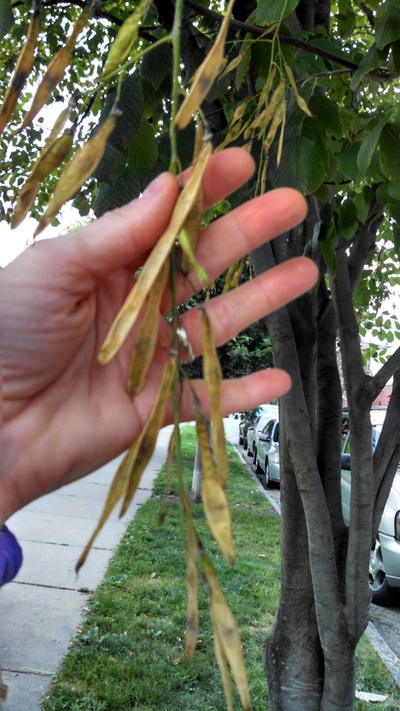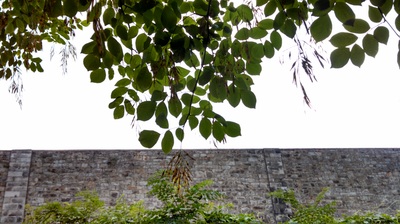 This spring I came upon a tree I didn’t recognize in my Philadelphia neighborhood. It was pumping out a sweet smell from showy flowers, and it grabbed my attention. When I find a tree I can’t identify in the city, I usually assume it’s an ornamental species that’s been imported from another country. That’s pretty common. Who doesn’t want to plant something exotic that none of the neighbors have? But in this case, my assumption was wrong. American yellowwood, Cladrastis kentukea in Latin, is a species native to the United States! How could I have missed such a distinctive tree?
Yellowwood is a legume, which means it’s in the same family as peas. If you’ve ever grown peas or beans in your garden, the shape of the little flowers in these hanging, white clusters will look familiar. I thought this might mean that yellowwood trees have the special ability to harvest nitrogen, like peas do, but it sounds like they didn’t inherit this family trait. Yellowwood do have seeds that grow in pods, just like peas. You can see some of the pods below. Both the flowers and the seeds appear in abundance every few years. Next time I get asked for a tree recommendation for someone’s yard, it’s going to be yellowwood!
3 Comments
Jane
8/26/2015 08:54:55 am
I'm collecting seeds from this one, so get in touch if you'd like to try germinating a few.
Reply
Town Pearson
9/24/2018 01:15:01 pm
Hello-
Reply
BJ
8/12/2023 02:06:23 pm
I live on Long Island, NY and have a large American Yellowwood happily growing in my yard. She’s a beauty in bloom which happens bi-annually. My tree bloomed this year and I have many seed pods hanging which I’d love to be propagated and seedlings shared. I don’t have the property size to plant another one. I asked my local nursery owner to get me an American Yellowwood and he was able to. It’s been growing at least ten years. I also like that it is not a dense shade tree and the showy fall foliage is a pretty yellow. I had read in one of my books that it was an “endangered” ornamental tree that would add interest to my yard and so I successfully pursued acquiring it. Best to you.
Reply
Leave a Reply. |
AuthorI'm a scientist who studies forests. I often need to measure lots of trees to understand why forests change. I think about trees a lot, and sometimes they just become numbers to me: how tall are they? how many are there? how many boards can you get out of them? Archives
October 2015
Categories |




 RSS Feed
RSS Feed